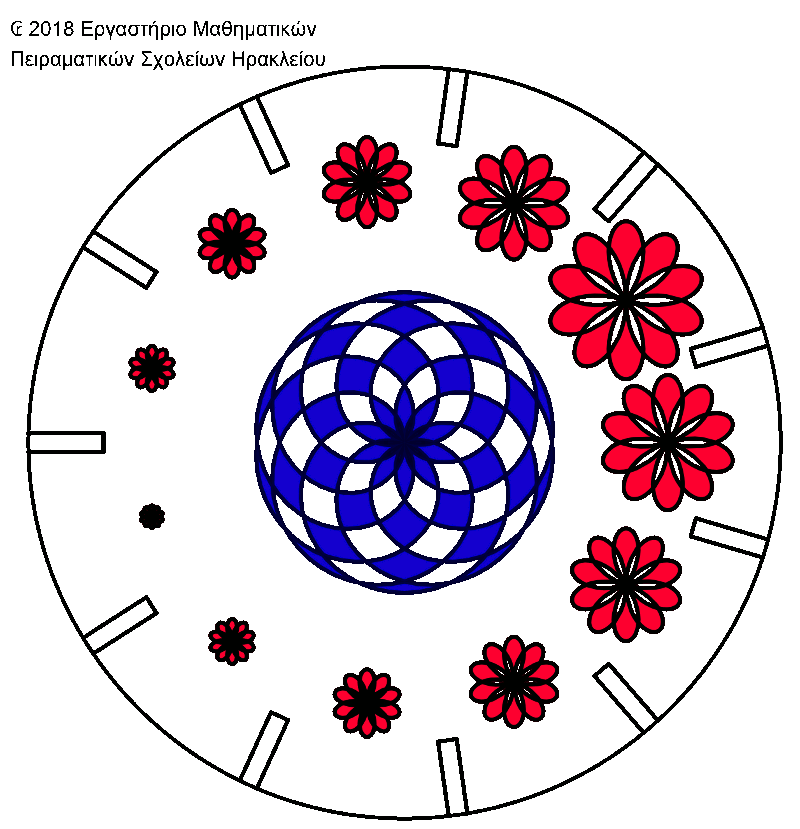Our school was one of the organizers of the great invent “Brain and addiction: What do you choose to lead you?” (Program). It took place on the Students’ Center of the University of Crete at Heraklion, on the 16th of March 2018. Many scientists gave interesting lectures about the physiology of brain and how addiction occurs. But two groups of students gave as much interesting talks about the emotions and the teenagers’ sleep habits. In the intervals between the presentations we enjoyed a student choir, a student duet of guitarists, student piano players, a student soprano, a student theatrical performance and a student dancing performance. All were so wonderful!
Mathematics, as the best antidote against addiction, was also present on the event. On the foyer, there were some stands with posters on optical illusion and on several tables there were some brain teasers from the MathMagic Group of our School, some mathematical toys and some optical toys as phenakistoscopes and scanimations. Quite many enjoyed all these goodies during the brake.
Quite often, mathematical transformations like rotation, reflection, magnification are used to create an optical illusion.
For example, no one believes that the two Shepard's tables are equal (first image) or we fail to recognize the concentric circles in the second image.
Click on the images to enlarge them.
The ancient greek word "φενάκη" (phenaki) means lie, fraud and the phenakistoscope is indeed deceptive. It was invented by Joseph Plateau in 1833 and is a simple and ingenious device that produces animations. To use, simply rotate the disk and view the idol of the disk in a mirror through the existing slots.
We created with GeoGebra (download ggb files) two phenakistoscopes that you can print (download png images or open the pdf file). See below the animation they produce:


You can use this template to create your own animated creations. Definetely, there are plenty phenakistoscopes ready to print in the internet, as these: [1], [2], [3], [4], [5], [6], [7], [8], [9], [10], [11], [12].
Phenakistoscopes bare a lot of mathematics. To divide a circle into sectors, to position correctly the animated image in each sector, or even to think of special curves for the desired motion. For example, in the first phenakistoscope we created, a circle that seams to move linerly from the center to the periphery of the disk, in the still drawing should have its center on a logarithmic spiral.
A bit more moder are the scanimations. A combination of a number of images that alter their stripes periodicaly. Below are the rotating gears, a scanimation we prepared for you (download pdf). There are more here: [1], [2], [3], [4], [5], [6].
It is easy to find a blue, a green or a red dragon. It is not the color that animates the dragon. It is how our brain perceives the face of the dragon as well as the unorthodox way of its construction.
- Visual Phenomena & Optical Illusions, Michael Bach
- Kinetic Illusions, Archimedes' Laboratory
- Shepard's Tables - what's up? Optical Illusions
- Τεχνικές κινούμενης εικόνας: τι υπήρχε πριν, Χριστίνα Ντεπιάν
- Phenakistoscope, Gents Universiteitsmuseum
- PHÉNAKISTISCOPE, LA CINÉMATHÈQUE FRANÇAISE
- Why does Scanimation move? Mechanism of Scanimation, optical-illusions.xyz
- Thinky the Dragon, Thinkfun
This site is mastered by Irini Perissinaki iriniper[ατ]sch.gr
Background image by 123RF
 OR
OR


